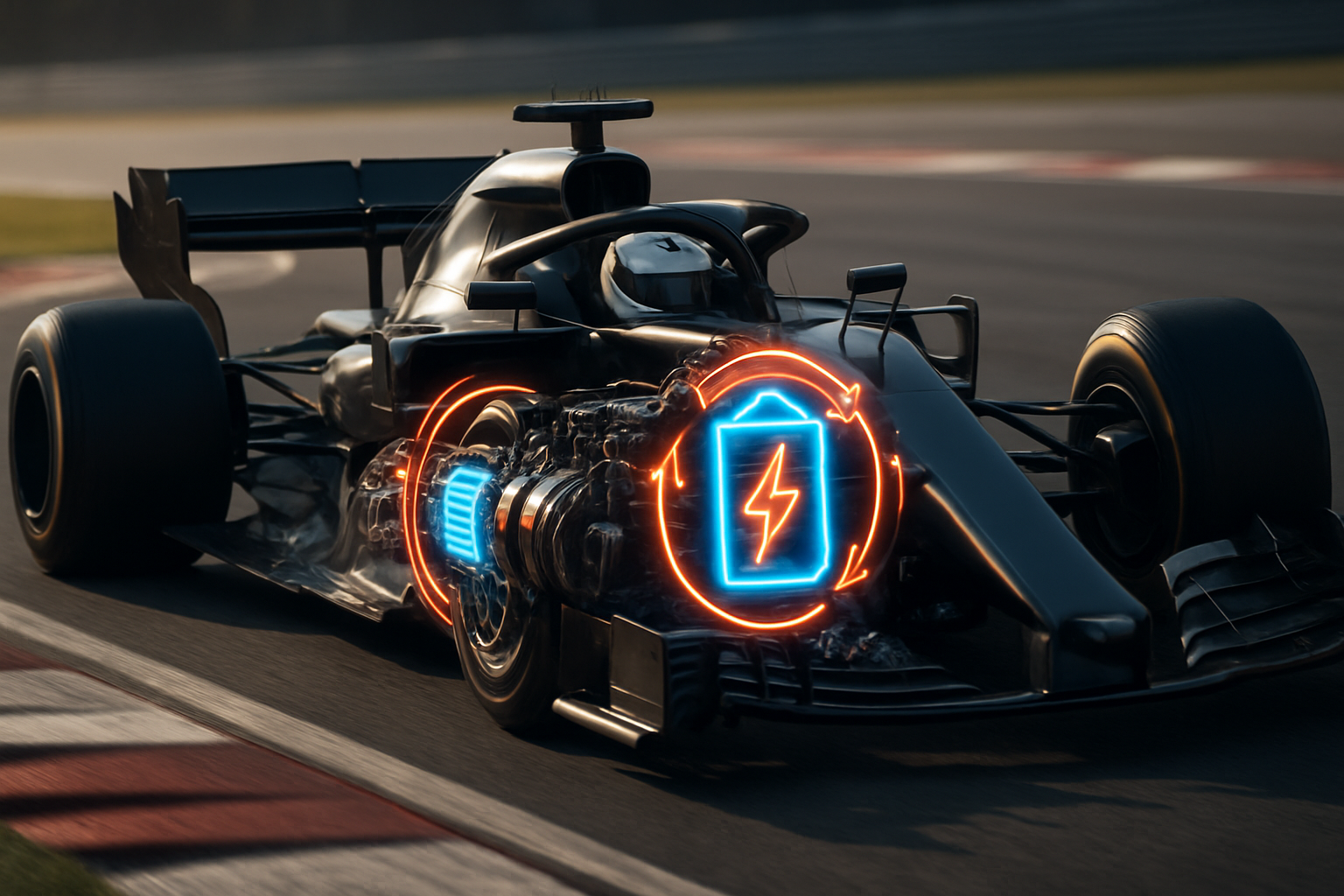Kinetic Energy Recovery Systems: Revolutionizing Motorsport Efficiency
The world of motorsport is constantly evolving, pushing the boundaries of automotive technology and engineering. One innovation that has been making waves in recent years is the Kinetic Energy Recovery System (KERS). This groundbreaking technology is transforming the way racing cars harness and utilize energy, leading to increased performance and efficiency on the track.

The Origins of KERS
The concept of recovering kinetic energy is not new. In fact, the idea dates back to the early 20th century when regenerative braking was first proposed for electric vehicles. However, it wasn’t until the early 2000s that the technology began to be seriously considered for use in high-performance motorsport applications.
The Federation Internationale de l’Automobile (FIA), the governing body for many auto racing events, first introduced KERS in Formula 1 for the 2009 season. The move was part of a broader initiative to make the sport more environmentally friendly and to drive innovation that could eventually benefit road cars.
Initially, teams struggled with the added weight and complexity of the systems, but as the technology matured, KERS became an integral part of Formula 1 strategy and performance.
How KERS Works
At its core, KERS is designed to recover the kinetic energy that is normally wasted during braking. This energy is then stored and can be used to provide an additional power boost to the engine when needed. There are several types of KERS, but the two most common in motorsport are electrical and mechanical systems.
Electrical KERS uses a motor-generator unit connected to the car’s transmission. During braking, this unit acts as a generator, converting kinetic energy into electrical energy, which is then stored in a battery pack. When the driver needs extra power, the stored energy is converted back into kinetic energy, providing a boost to the engine’s output.
Mechanical KERS, on the other hand, typically uses a flywheel to store energy. As the car brakes, the flywheel spins up, storing rotational energy. This energy can then be transferred back to the wheels when needed, providing additional acceleration.
The Impact on Racing Strategy
The introduction of KERS has had a profound impact on racing strategy, particularly in Formula 1. Drivers now have an additional tool at their disposal, allowing for more tactical overtaking maneuvers and defensive driving.
With KERS, drivers can deploy extra power for a set amount of time per lap, typically around 6.67 seconds in Formula 1. This boost can be used all at once for a substantial increase in speed, or it can be rationed out over several smaller bursts throughout the lap.
Teams must carefully consider when and where to use KERS to maximize its effectiveness. Using it wisely can mean the difference between making a crucial overtake or defending a position. This added layer of strategy has made races more dynamic and unpredictable, much to the delight of fans.
Beyond Formula 1: KERS in Other Motorsports
While Formula 1 has been at the forefront of KERS development, the technology has begun to spread to other forms of motorsport. Endurance racing, in particular, has embraced energy recovery systems as a way to improve efficiency over long races.
The FIA World Endurance Championship, which includes the famous 24 Hours of Le Mans, has incorporated hybrid powertrains that use principles similar to KERS. These systems have allowed teams to reduce fuel consumption while maintaining high performance levels.
In rallying, the World Rally Championship (WRC) introduced hybrid powertrains in 2022, which include energy recovery systems. This move not only boosts performance but also aligns the sport more closely with road car technology.
Challenges and Future Developments
Despite its benefits, KERS is not without its challenges. The additional weight of the system can offset some of the performance gains, particularly in series where weight is a crucial factor. There are also reliability concerns, as the complex systems can be prone to failures.
However, ongoing research and development are addressing these issues. Engineers are working on lighter, more efficient energy storage solutions, such as supercapacitors and advanced flywheels. There’s also a push towards standardizing some KERS components to reduce costs and improve reliability across the board.
Looking to the future, we can expect to see even more advanced energy recovery systems in motorsport. These might include multiple energy recovery systems working in tandem, or even more radical solutions like thermal energy recovery from exhaust gases.
From Track to Street: The Road Car Connection
One of the most exciting aspects of KERS in motorsport is its potential to improve road car technology. As with many automotive innovations, what starts on the racetrack often finds its way into production vehicles.
Already, we’re seeing the principles of KERS being applied to hybrid and conventional vehicles in the form of regenerative braking systems. These systems help to improve fuel efficiency and reduce emissions in everyday driving scenarios.
As the technology continues to evolve and become more cost-effective, we can expect to see more advanced energy recovery systems in a wider range of vehicles. This could lead to significant improvements in fuel economy and performance, benefiting both consumers and the environment.
In conclusion, Kinetic Energy Recovery Systems have ushered in a new era of efficiency and performance in motorsport. From Formula 1 to endurance racing and beyond, KERS has changed the way teams and drivers approach racing strategy. As the technology continues to evolve, it promises not only to push the boundaries of what’s possible on the track but also to drive innovation in the broader automotive industry. The future of motorsport – and indeed, of automotive technology as a whole – looks set to be shaped by the ongoing development of these ingenious energy recovery systems.





